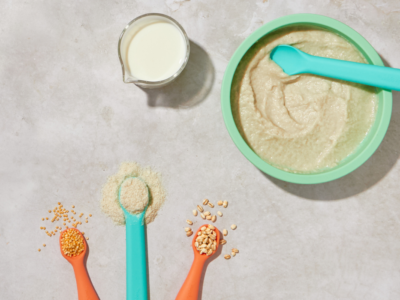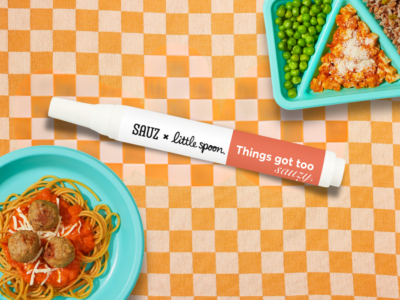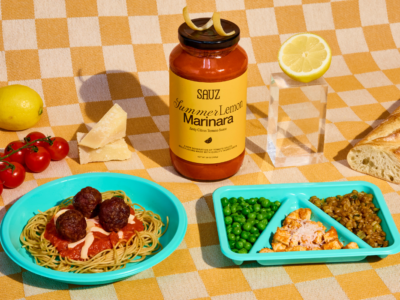Feeding babies can be a little nerve wracking for some parents and caregivers, especially when you’re doing it for the first time. How do we know that they’ll know what to do with the food in their mouth? If you choose to start your baby with purees, it’s easy to get in a habit offering the same smooth texture over and over. Learning to eat is a developmental skill that babies will develop over time, just like rolling, sitting, and walking. As parents, it is our job to help support our babies as they learn these amazing new skills, and when it comes to eating, trying new textures is a huge part of skill development.
Here are 5 things to know as you advance your baby’s food textures past purees.
Take it slow.
If progressing beyond purées makes you nervous, take baby steps to start! Your baby will pick up on the vibes of a calm and confident parent, making mealtime more enjoyable for everyone. Try experimenting with different settings on your food processor or blender to change up the consistency of your purées. Instead of blending apples until totally smooth, serve a chunkier applesauce. Instead of opting for baby cereal, try regular oatmeal with rolled oats. Mash fruits and veggies with a fork for more of a “rough” purée. You can even start by mixing half and half—part smooth mixture and part something that has a little more texture.
Add ingredients.
Another way to change the texture of your baby’s purees is to add to it. For example if you’re serving yogurt or a fruit/veggie puree, mix in some chia seeds, hemp seeds, flax seeds, shredded unsweetened coconut flakes, or sesame seeds (if you’ve safely introduced sesame before). Or, try adding cooked lentils or quinoa to mashed avocado instead of serving it plain. Bonus: this bumps up the nutrient density while also increasing new texture acceptance.
Babies don’t need teeth to chew.
Yup, you heard that right. Babies jaws are very strong (put your finger in their mouths when they’re chomping down on something and you’ll find out the hard way!) and can manage soft chewable solids perfectly without a single tooth. A good rule of thumb: if you can smush a food between your thumb and forefinger, your baby can chew it without teeth.
Gagging ≠ Choking.
The gag reflex is a normal safety mechanism that all healthy babies have, and it’s a good sign that your baby’s body is aware food has moved too far back and is trying to bring it forward. All babies will gag at some point when learning how to eat solid foods— whether it’s puréed or a solid piece of table food. If you’re concerned about choking (which looks quite different from gagging), I recommend taking an infant CPR course before starting your solids journey.
Start as soon as your baby is ready.
With starting solids and introducing new textures, think less about age and more about skill level. Once your baby has mastered smooth purées, it’s time to progress to foods with a little more texture. All babies move at a different pace, but exposure is key—so don’t be afraid to introduce some version of “table food” alongside the range of textures and ingredients once your little one is comfortable with purees. Delaying introduction of foods with different consistencies may limit the variety in your baby’s diet and potentially lead to issues with texture acceptance down the road. If you’re truly worried about your child’s progress with solid foods, don’t hesitate to discuss it with your provider!



